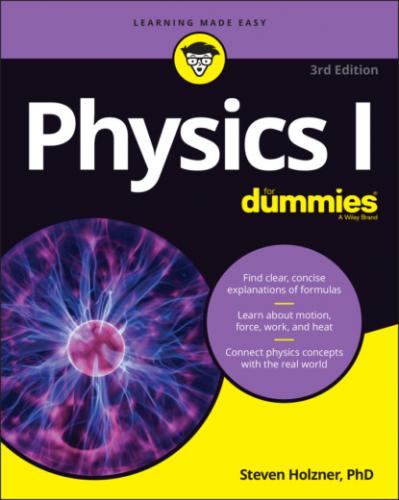Substituting for the time, t, you get
After doing the algebra and simplifying, you get
Whew! If you can memorize this one, you can relate velocity, acceleration, and displacement. Put this equation to work — you see it often in physics problems.
Finding acceleration
There you are, getting into your Physics racer as the crowd cheers. It’s time for some hefty acceleration. You get out your clipboard. What acceleration would you need to end up at 100 miles per hour at the end of a 1.0-mile racetrack?
Okay, you think. You need an equation that relates speed, acceleration, and displacement. It’s time for
In this case, it’s even a little easier, because you know that the initial velocity is 0
Well, well, it looks like the problem is half-solved. Putting in the numbers gives you
Now solve for a:
Miles per hour2? What the heck kind of units are those? Change that to something more understandable, such as mph per second. To change one of the per-hour units to per-second, multiply by the conversion factor (see Chapter 2):
So your velocity would be increasing by only 1.4 mph every second — that’s not too outrageous — you’d feel a mild acceleration, that’s all.
Solving for displacement
Now say that you’re at the end of the first mile and want to see how far you’d have to go — at the same acceleration — to get to 200 miles per hour. Once again, you need to relate velocity, acceleration, and displacement, so this equation is your baby:
Here, you want to solve for s, the displacement, and you get this:
Great. Now for some numbers. In this case,
So it would take 3.0 additional miles to get you up to 200 mph.
Finding final velocity
Here’s one more example. Say you’re in your rocket ship, happily speeding along at some 3.25 kilometers per second (about 7,280 miles per hour) when you see a sign: Speed Zone 215 km Ahead — New Speed Limit: 3.0 km/s.
You jam on the brakes (which are a retro rocket in the front of the rocket ship). The retro rocket is capable of accelerating your ship at –10.0 meters/second2.
It’s a tense moment. Will you get your speed down to below 3.0 kilometers per second in 215 kilometers of acceleration? Find out, using your old friend:
In this case, you want to solve for the final speed, which is
where
Whew, you think — 2.50 kilometers per second is well under the speed limit of 3.0 kilometers per second. You’re safe.
You can now consider yourself a motion master.
Конец ознакомительного фрагмента.
Текст предоставлен ООО «ЛитРес».
Прочитайте эту книгу целиком, купив полную легальную версию на ЛитРес.
Безопасно оплатить книгу можно банковской картой Visa, MasterCard, Maestro, со счета мобильного телефона, с платежного терминала, в салоне МТС или Связной, через PayPal, WebMoney, Яндекс.Деньги, QIWI Кошелек, бонусными картами или другим удобным Вам способом.
